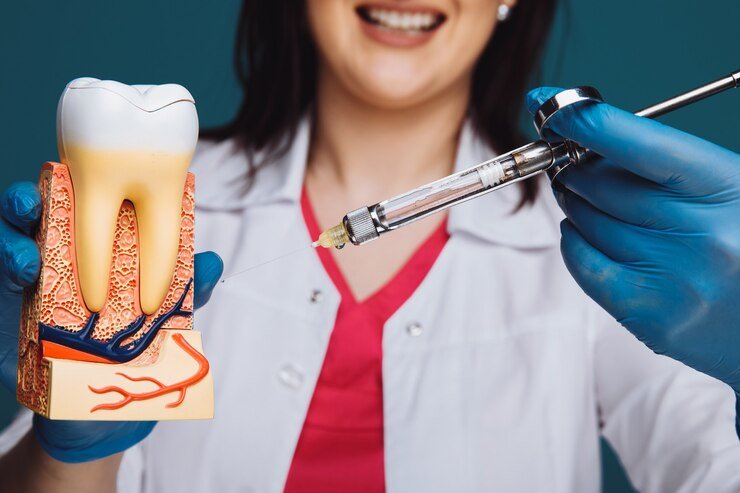When faced with discomfort and intense pain in a tooth, one might wonder whether a root canals Lafayette LA treatment is necessary. A dentist may suggest this procedure if there are signs such as swelling, gum infections, tenderness, gum boils, severe pain, and heightened sensitivity to temperature changes. Commonly referred to as Endodontic treatment, a root canal procedure is generally straightforward. The dentist’s role involves removing the infected pulp and sealing the canals. Following the procedure, patients typically require a temporary crown to protect the treated tooth.
The Procedure of Root Canals
Preparing the Area
The root canals Lafayette LA procedure commences with the dentist administering a local anesthetic to numb the targeted area. This is achieved through injections that deliver the anesthetic into the gums and the root of the affected tooth. Following the numbing process, a dental dam is positioned in the patient’s mouth, effectively isolating the tooth requiring treatment while shielding the surrounding teeth.
Accessing and Cleaning the Roots
Subsequently, the dentist utilizes a drill to penetrate the tooth, gaining access to the root canals Lafayette LA and the pulp chamber. Specialized instruments are employed to meticulously clean the pulp chamber and root canals. To ensure thorough disinfection, an antibacterial and antiseptic solution is applied, which eradicates any bacteria and addresses the infection present within the canals.
Shaping the Canals
The final step involves the placement of a filling within the root canals. Prior to this, the canals must be appropriately shaped using small instruments to prepare them for the filling material. After shaping, the canals undergo a second cleaning to ensure they are free of debris and contaminants before the filling is applied.
Filling the Canals
The dentist will utilize gutta-percha to fill the root canals Lafayette LA. This flexible material is inserted into the canals and subsequently heated to ensure optimal adaptation. The dentist then compresses the gutta-percha to ensure a tight fit against the canal walls. To enhance the sealing of the canals, adhesive cement is applied, which effectively prevents the ingress of bacteria.
Filling to the Access Hole
Additionally, the dentist must seal the access point created to reach the canals. This filling serves as a barrier against bacterial infiltration into the tooth. In cases where the tooth has sustained significant damage and lacks the structural integrity to support a restoration, the dentist may opt to place a post within the canal to provide additional reinforcement.
Healing and Antibiotics
Following the procedure, the dentist may prescribe antibiotics to eliminate any remaining infection. The patient will also receive specific post-operative care instructions. It is common to experience some level of discomfort in the days following the treatment, but over-the-counter pain relief medications are typically effective in managing this discomfort.
Adding the Crown
In instances where the root canals Lafayette LA procedure involves a molar or if the tooth exhibits considerable damage, it is necessary for the patient to return for the placement of a crown. This crown encases the treated tooth, providing essential strength and stability. A permanent crown is custom-made to blend seamlessly with the surrounding teeth, ensuring that once it is affixed, the tooth can once again withstand the pressures associated with chewing.
Is Crown Necessary after RCT?
Many individuals harbor apprehensions regarding this seemingly simple procedure, primarily due to concerns about discomfort and the subsequent crown placement. It is important to understand that root canal therapy is designed to relieve pain and safeguard the tooth from potential infections and further deterioration. Typically, the treatment is not deemed complete without the application of a protective dental crown.
Can I Eat after a Root Canal?
Following an extensive dental appointment, it is common to feel hungry; however, it is advisable to refrain from eating until the effects of the anesthetic have fully worn off. This precaution helps prevent the risk of inadvertently biting an area that has not yet regained its normal sensation, thereby ensuring a safer recovery process.



